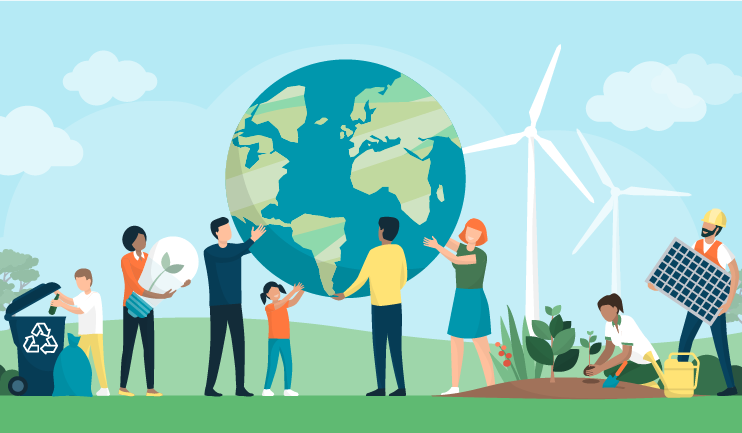- Insulate your home well. You might be eligible for grant funding to get insulation.
- Use efficient LED light bulbs
- Turn things off when they’re not in use: lights, TVs, phone chargers, etc.
- Use 'smart' or timed plugs to automatically turn off sockets at times you set.
Climate emergency

The Council declared a climate emergency in 2019. On declaration of a climate emergency, an LA is affirming that it will place the Climate Emergency at the centre of its decision-making process.
We aim to reduce our carbon emission by 50% by 2030 and achieve Net Zero by 2040.
We have adopted a carbon reduction strategy and developed an action plan as our route map to deliver our aims. We recognise that our actions can have impacts outside of our own boundaries and as such, where appropriate, we aim also to influence the reduce of carbon emissions outside Council activities.
Carbon Reduction Strategy Implementation Plan
What you can do
Here are some simple steps on energy, travel and waste to reduce your climate impact and combat climate change.
When you do one small thing, it's not much, is it? But down your road that's 10 small things, and 1,000 more across your town. Nationwide, it's 1,000,000 small things. When we all make small changes, big things happen.
Your Energy Use
Your travel
It takes energy to move, and much of the energy required for travel is carbon-heavy. Nonetheless, there are simple things you can do to reduce how much carbon your travel generates.
Your waste
Everything takes raw materials to create, energy to produce, transport to move, and then has to be dealt with at the end of its life. For this reason, 'reduce, reuse, recycle' is the three-step waste mantra worldwide. Reduce your carbon:
Feedback & Share
Share this page on social media
